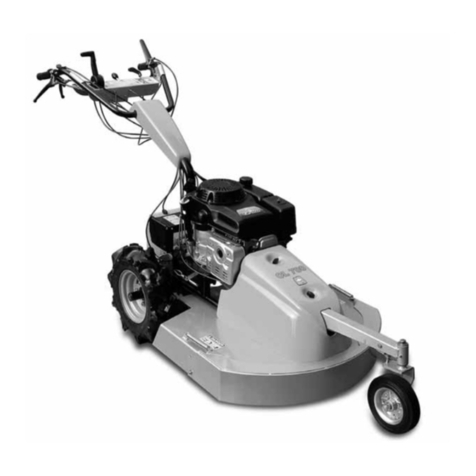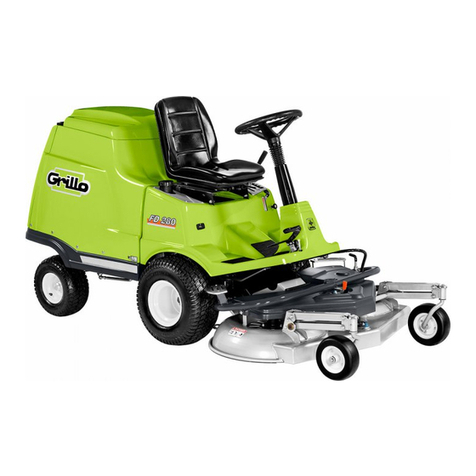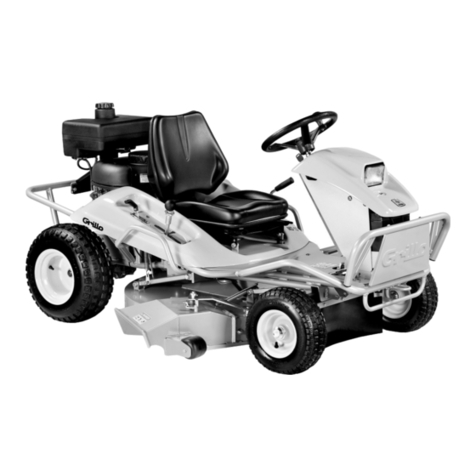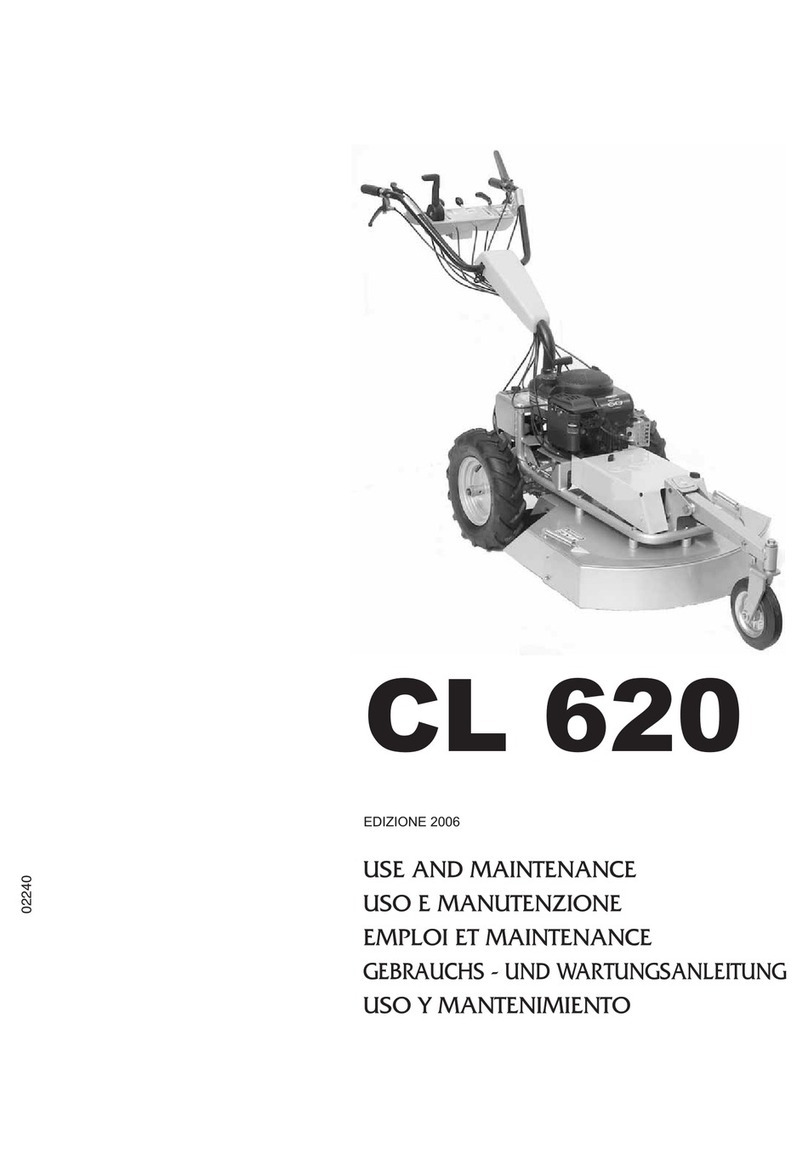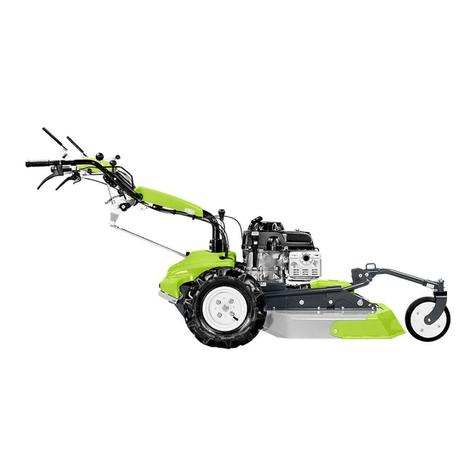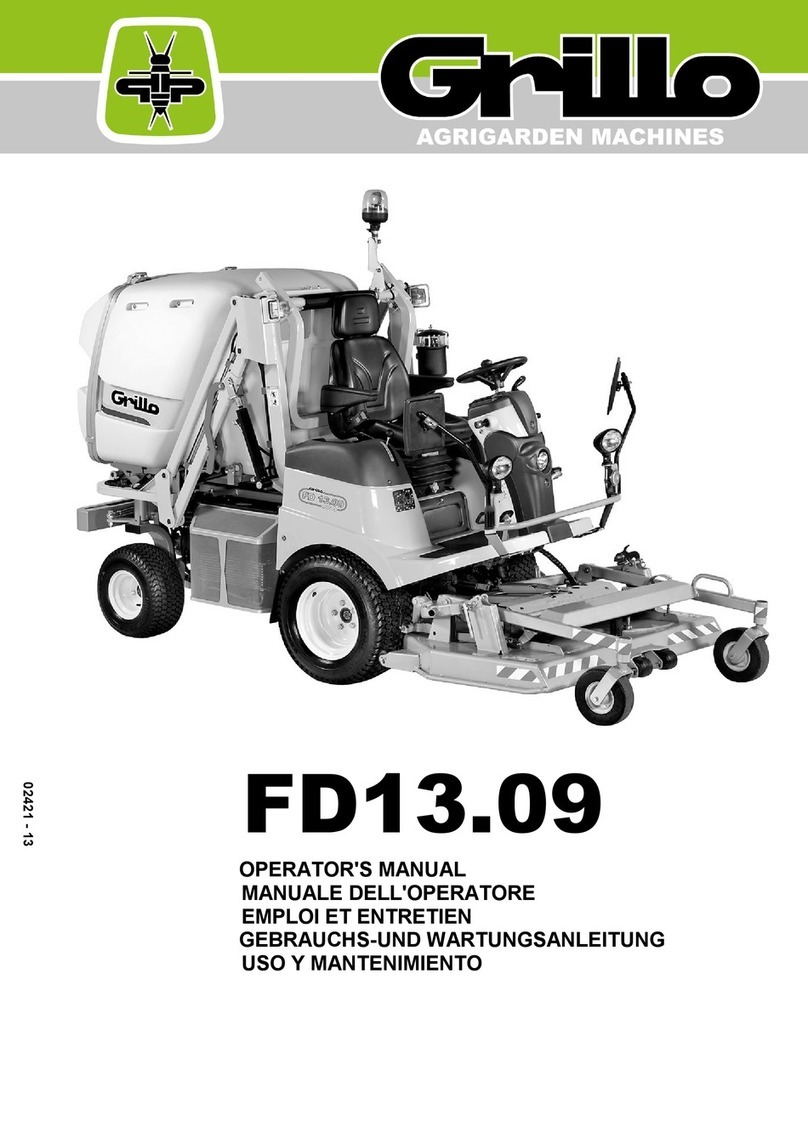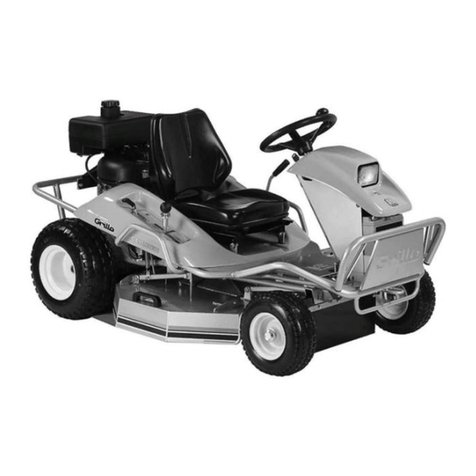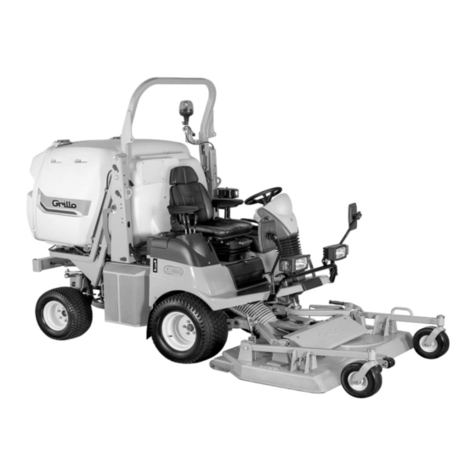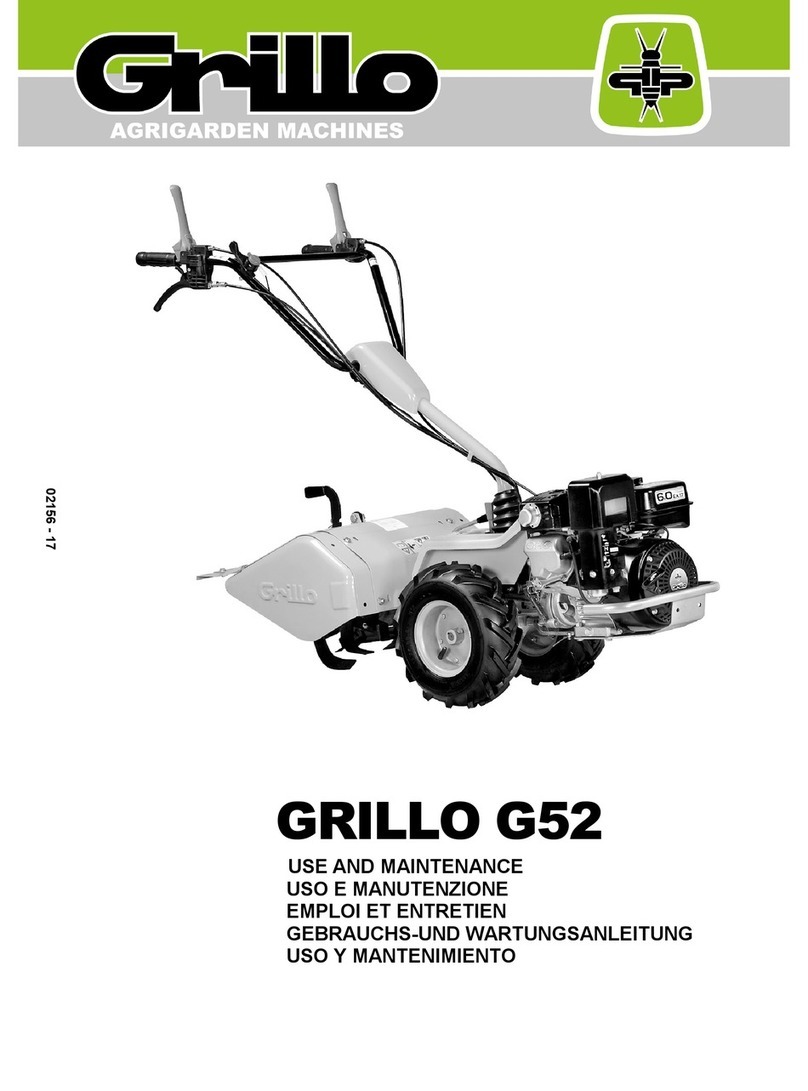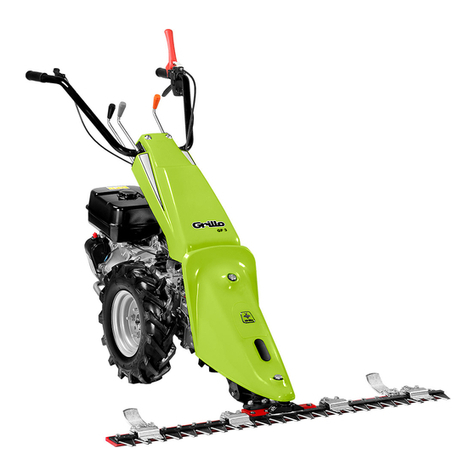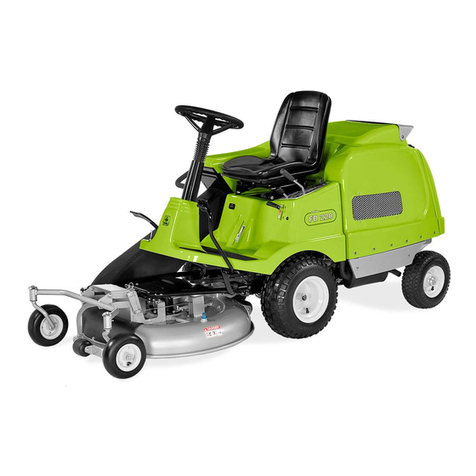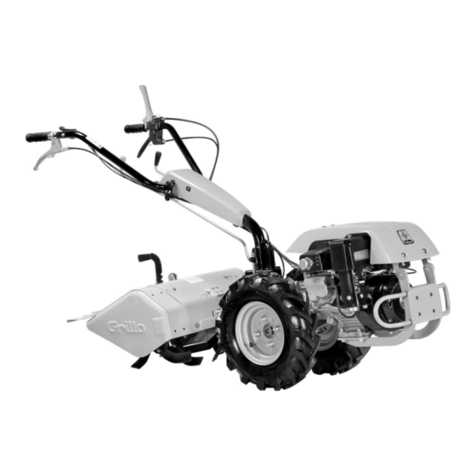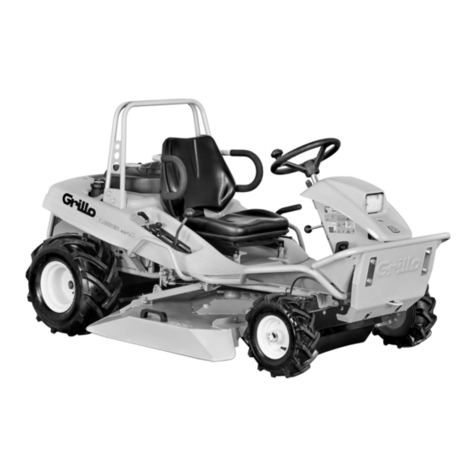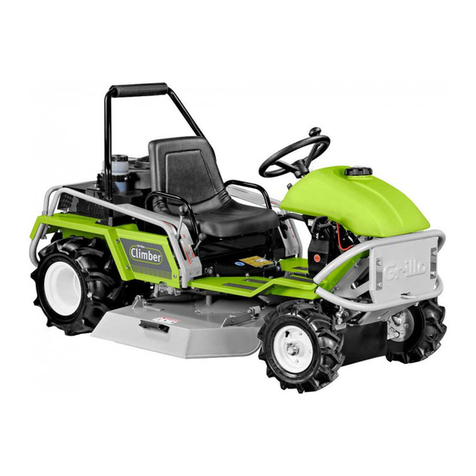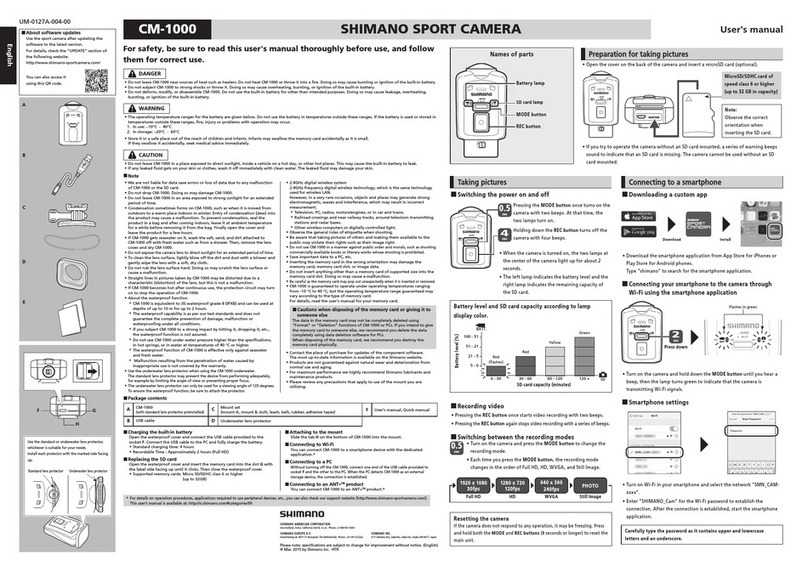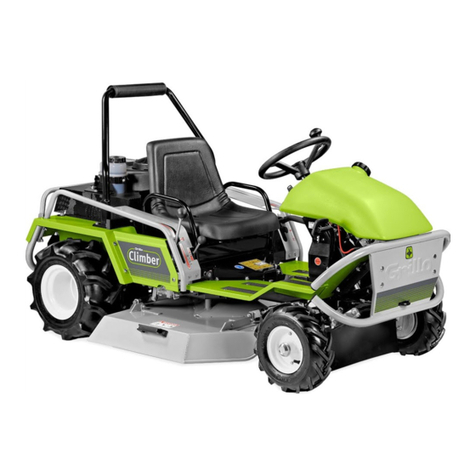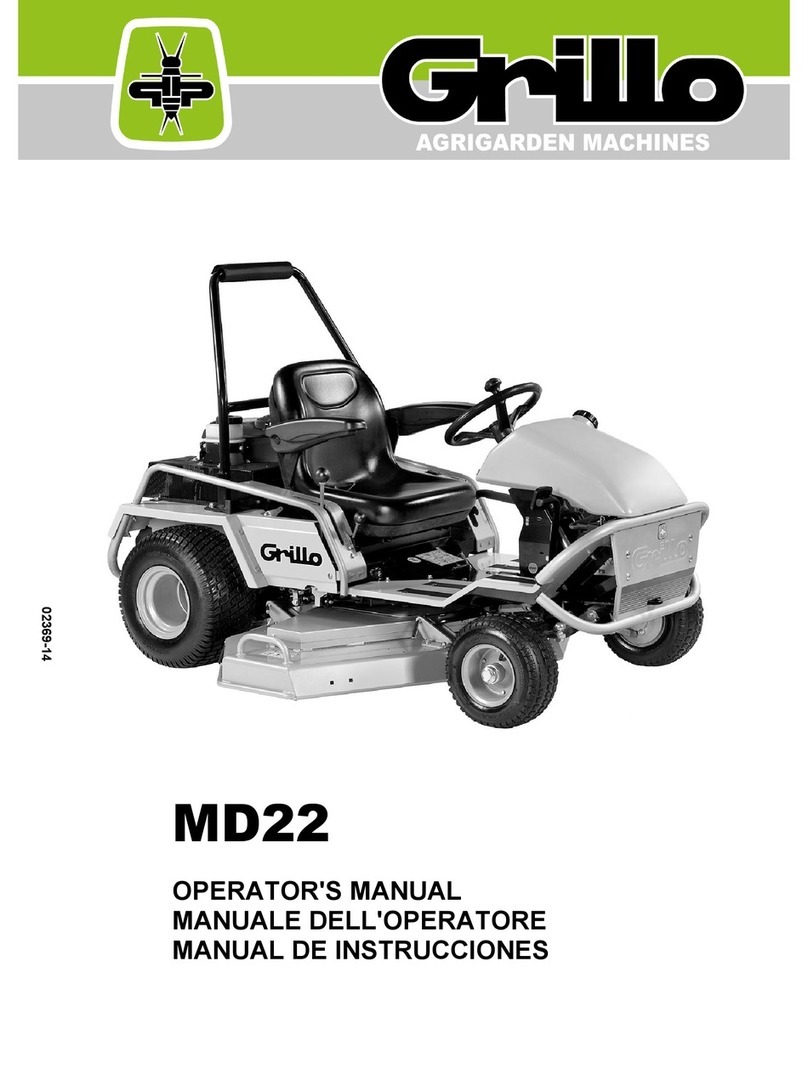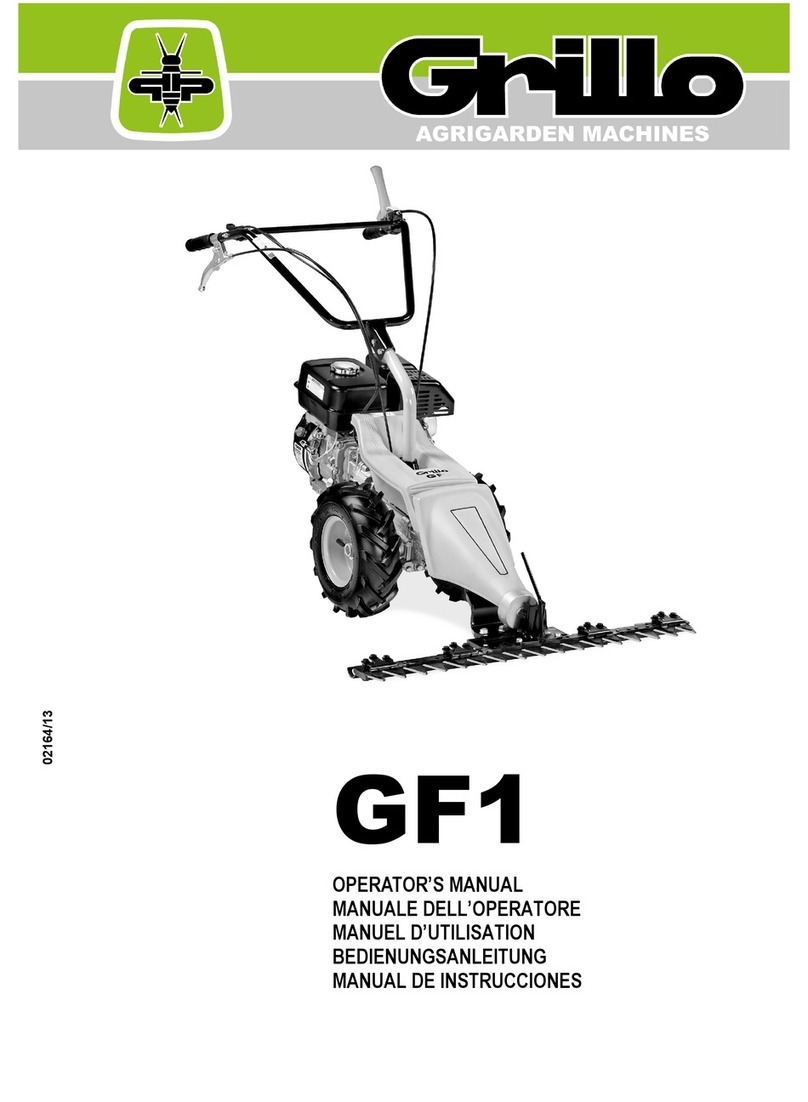Prevent battery explosions: keep sparks lighted matches and open flames away from the
top of the battery. Battery gas can explode.
Per prevenire l’esplosione della batteria, tenete scintille, fiammiferi accesi e fiamme lontani
dalla stessa. Il gas della batteria può esplodere.
Prévenir l’explosion de la batterie: tenir les étincelles les allumettes et le feu loin de la
batterie. Le gaz de la batterie peut exploser.
Vorbeugung der Batterie-Explosion. Entfernen ie Funken, Zündhölzer und Flammen von
der Batterie. Das Batteriegas kann explodieren.
Para prevenir la explosión de la batería mantener chispas cerillas encendidas y llamas
lejos de la misma. El gas de la batería puede explotar.
Para prevenir explosão da bateria ter centelhas, fósforos acendido e chamas longe da
mesma. O gás da bateria poderia explodir.
Handle fuel with care it is highly flammable: Do not refuel machine while smoking when
machine is near an open flame or sparks or when the engine is running. Stop the engine.
Maneggiare il carburante con cura, è altamente infiammabile; non fate rifornimento mentre
fumate, o vicino a fiamme o scintille, o quando il motore è acceso.
Manier avec soin le carburant car c’est très inflammable. Ne pas remplir le réservoir si vous
êtes en train de fumer ou pendant que la machine est près du feu ou d’étincelles ou encore
pendant que la machine travaille. Arrêter le moteur.
Treibstoff vorsichtig handhaben, da er sehr entzündbar ist: beim Tanken nicht rauchen.
Nicht tanken, wenn die Maschine in der Nähe von Flammen oder Funken ist oder wenn der
Motor läuft. Immer den Motor abschalten.
Manejar el combustible con cuidado porque es sumamente inflamable; no repostar
mientras se fuma o cerca de llamas o chispas o cuando el motor está encendido.
Manuseie o carburante com cuidado, pois este è altamente inflamável; não fume durante o
abastecimento da máquina ou enquanto o motor estiver ligado, não o aproximado de
chama ou de faíscas.
Rotating blades are dangerous. Protect children and prevent accidents.
Le lame in movimento sono pericolose. Proteggete i bambini e prevenite gli incidenti.
Les lames en rotation sont dangereuses. Protéger les enfants et prévenir les accidents.
Arbeitende Messer sind gefährlich, Kinder schützen und Unfälle vorbeugen.
Las cuchillas en movimiento son peligrosas proteger a los niños y prevenir los accidentes.
As facas em movimento são perigosas. Proteger as crianças e prevenir acidentes.
Sulphuric acid in battery electrolyte is poisonous. It is strong enough to burn skin eat holes
in clothing and cause blindness if it gets in contact with the eyes.
L’acido solforico della batteria è velenoso. È in grado di causare bruciature alla pelle,
bucare vestiti e causare cecità se arriva negli occhi.
L’acide sulfurique de la batterie est toxique. Il peut causer des brûlures à la peau
endommager les vêtements et peut aussi causer cécité.
äure der Batterie ist giftig. ie kann die Haut verbrennen, Löcher in die Kleidung machen
und Blindheit verursachen.
El ácido sulfúreo de la batería es venenoso puede provocar quemaduras en la piel agujar
la ropa y provocar ceguera si llega a los ojos.
O acido sulfúrico e tóxico. Pode ser causa de queimadura da pele, furar roupa e provocar
cegueira, no caso chegarem em contacto com os olhos.
Avoid tipping. Do not drive where machine could slip or tip. Stay alert for holes and other
hidden objects.
Evitate le scivolate. Non guidate dove la macchina potrebbe scivolare o inclinarsi.
Attenzione a buche o ad oggetti nascosti.
Éviter les pentes. Ne pas conduire la machine où elle pourrait glisser ou se renverser. Faire
attention aux trous ou à tout autre obstacle caché.
Nicht dort fahren wo die Maschine rutschen könnte. Vorsicht bei Löchern oder versteckten
Gegenständen.
Evitar patinazos. No conducir donde la máquina pueda patinar o inclinarse. Cuidado con
los baches o con objetos escondidos.
Evitar deslizamentos. Não dirija em lugares onde a maquina poderia deslizar. Ter cuidado
a buracos e objetos escondidos.

